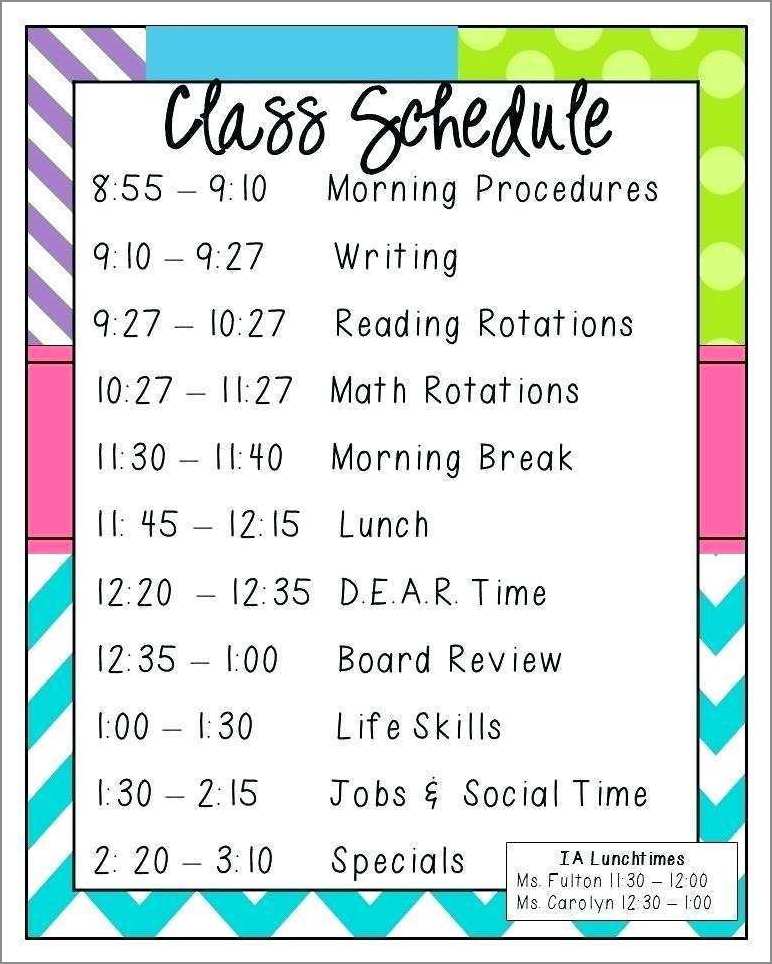Creating an effective classroom schedule is crucial for a smooth and productive learning environment. A well-designed schedule ensures that students and teachers can make the most of their time in the classroom, allowing for a balance between structured activities and flexibility.
In this article, we will explore the key elements of a classroom schedule and provide tips on how to create one that works for you and your students.
What is a Classroom Schedule and Why is it Important?
A classroom schedule is a timetable that outlines the daily activities, lessons, and routines that take place in a classroom. It provides a structured framework for both students and teachers, helping to establish a routine and maximize learning opportunities. A well-designed schedule can help students develop time management skills, foster a sense of responsibility, and create a positive learning environment.
Having a clear and organized schedule allows teachers to plan and prepare lessons effectively, ensuring that all necessary topics are covered within the allocated time. It also helps students to know what to expect throughout the day, reducing anxiety and promoting a sense of security. Additionally, a well-designed schedule allows for flexibility and adaptation, allowing teachers to incorporate spontaneous learning opportunities or address unexpected issues that may arise.
How to Create an Effective Classroom Schedule
Creating an effective classroom schedule requires careful consideration of various factors. Here are some key steps to follow:
1. Identify Learning Objectives
Start by identifying the learning objectives for each subject or topic. This will help you determine the amount of time needed for each lesson and ensure that all essential content is covered.
2. Allocate Time
Allocate specific time slots for each subject or activity, considering the needs and abilities of your students. Be sure to provide enough time for instruction, practice, and review.
3. Consider Transitions
Take into account the time needed for transitions between activities. Plan for smooth transitions by allowing ample time for students to gather materials, move to different areas of the classroom, or switch to a new task.
4. Include Breaks
Include regular breaks in your schedule to allow students to recharge and refocus. Short breaks can help improve productivity and attention span, leading to better learning outcomes.
5. Be Flexible
While it’s important to have a structured schedule, it’s equally important to allow for flexibility. Be prepared to adapt and adjust the schedule as needed based on the needs of your students or unexpected events that may occur.
6. Communicate the Schedule
Ensure that your students and any other relevant parties, such as parents or administrators, are aware of the schedule. Display it prominently in the classroom and provide copies to parents if necessary.
7. Reflect and Revise
Regularly reflect on the effectiveness of your schedule and make revisions as needed. Pay attention to how well the schedule is working for your students and make adjustments to optimize their learning experience.
Sample Classroom Schedule
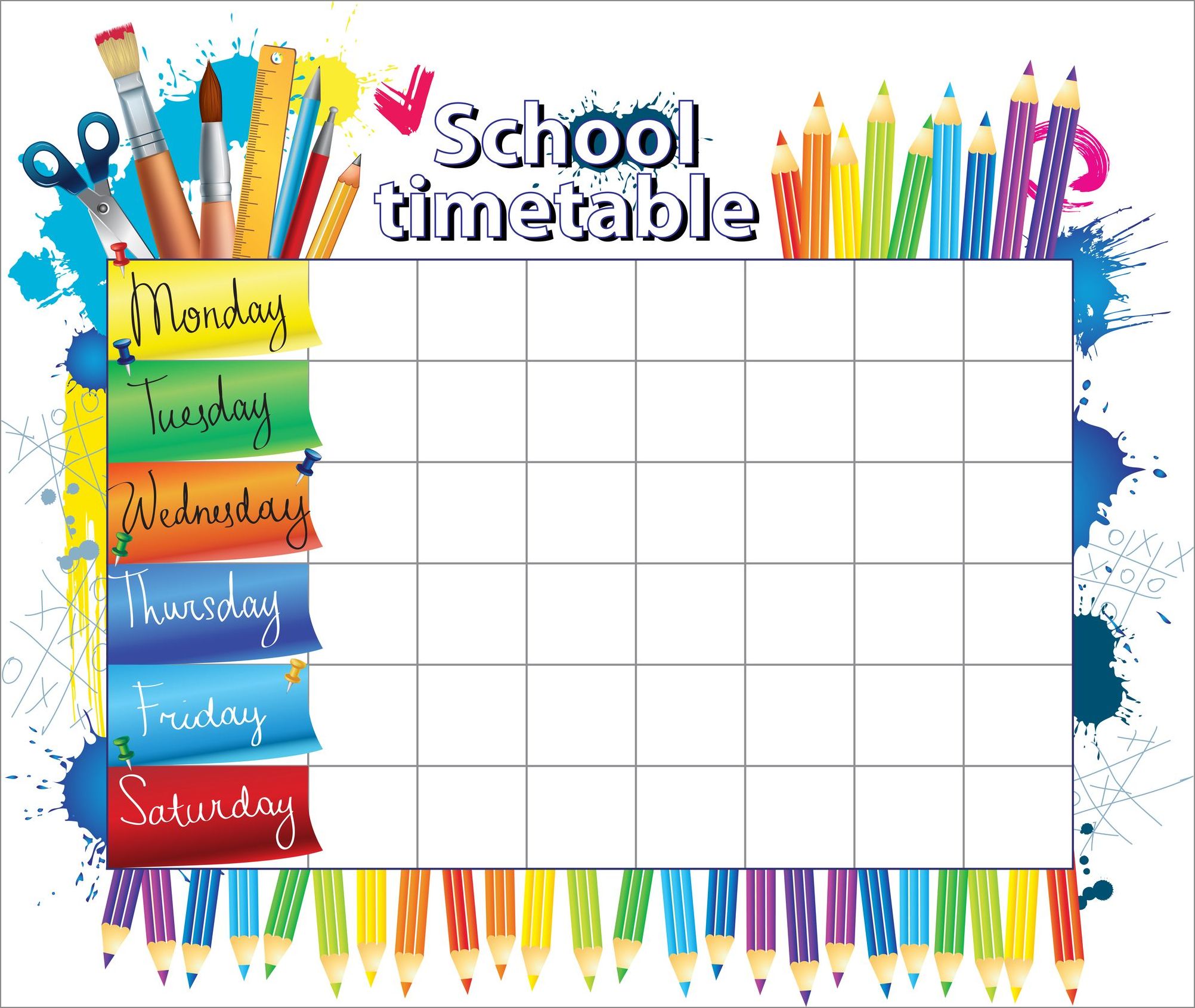
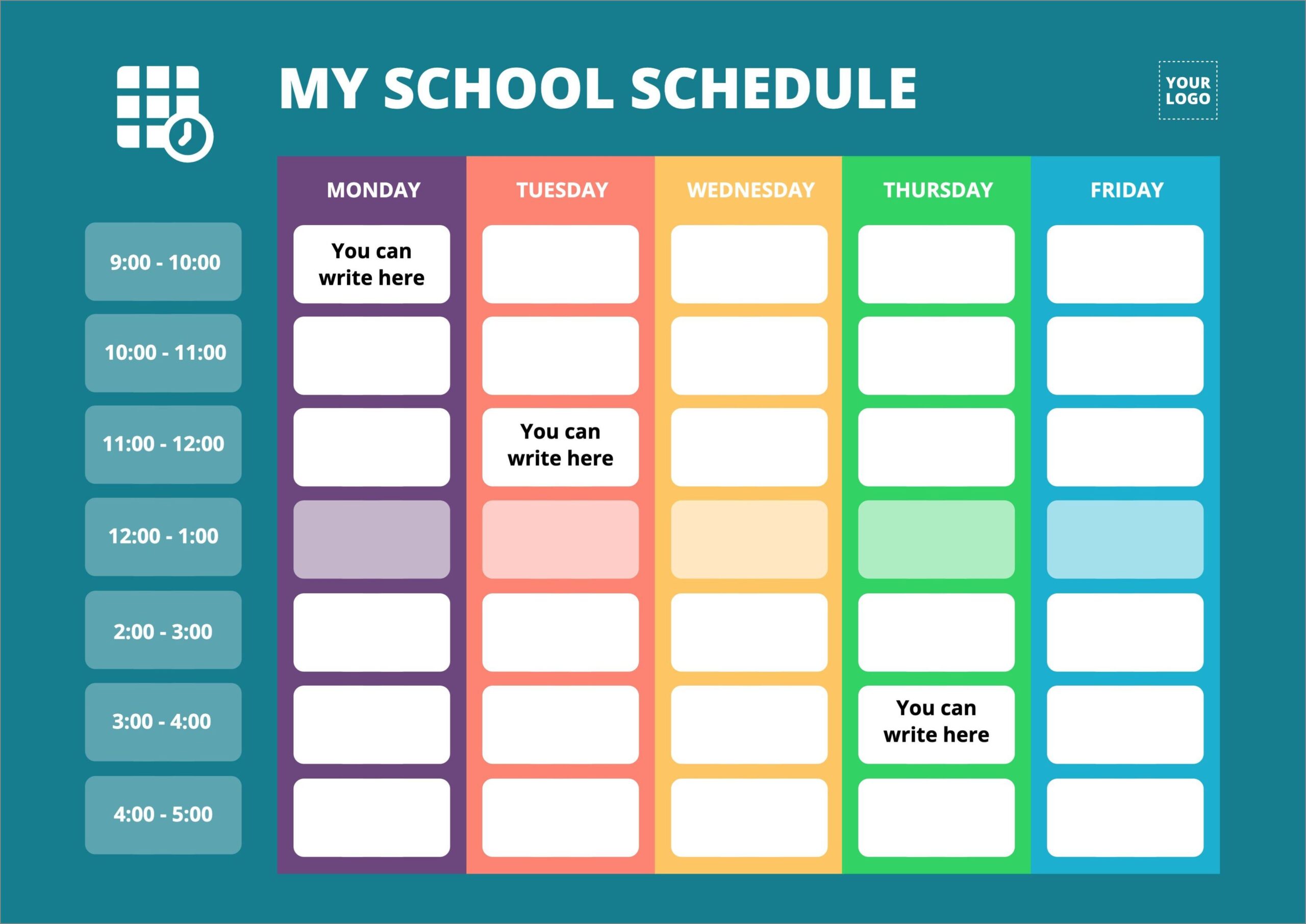
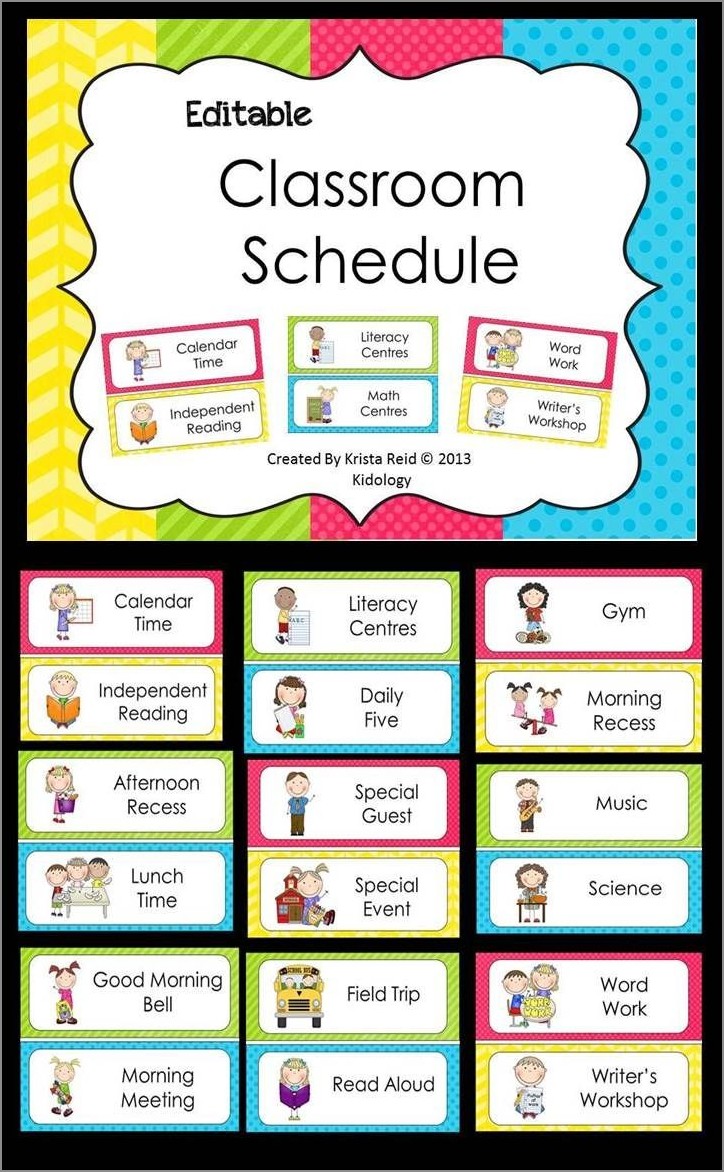
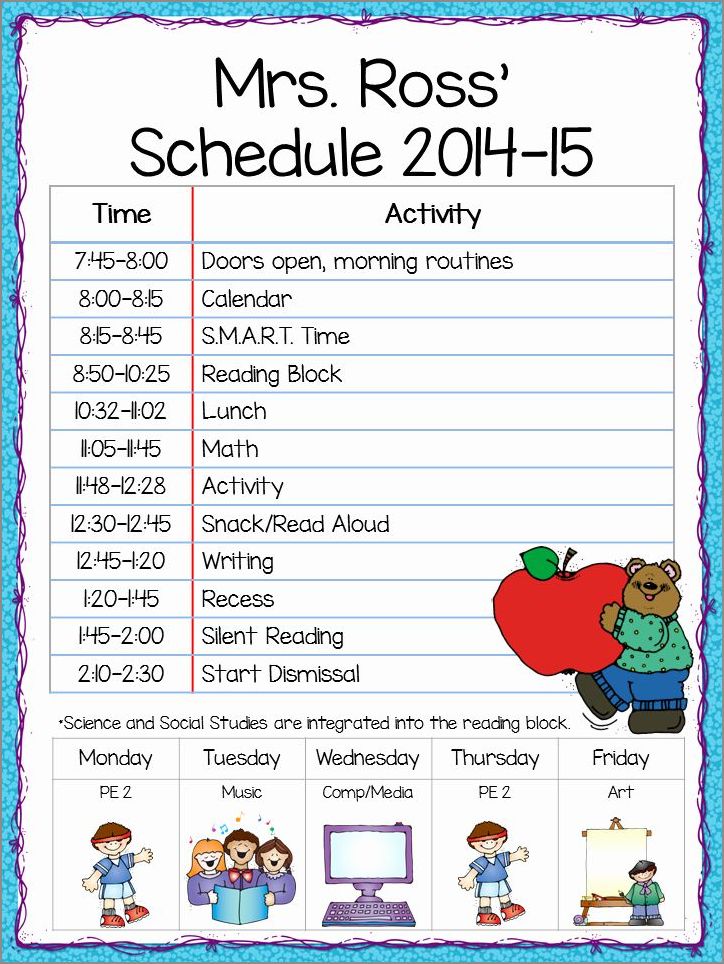
Here is a sample classroom schedule that demonstrates how the above steps can be applied:
- 8:00 AM – 8:15 AM Morning Arrival Routine
- 8:15 AM – 8:30 AM Morning Meeting
- 8:30 AM – 9:00 AM Math Lesson
- 9:00 AM – 9:30 AM Reading Instruction
- 9:30 AM – 10:00 AM Snack Break
- 10:00 AM – 10:30 AM Science Experiment
- 10:30 AM – 11:00 AM Physical Education
- 11:00 AM – 11:30 AM Lunch
- 11:30 AM – 12:00 PM Writing Workshop
- 12:00 PM – 12:30 PM Social Studies Discussion
- 12:30 PM – 1:00 PM Art Activity
- 1:00 PM – 1:30 PM Quiet Reading Time
- 1:30 PM – 2:00 PM Wrap-up and Dismissal
The Benefits of a Well-Designed Classroom Schedule
A well-designed classroom schedule offers several benefits:
- Improved time management skills for students
- Enhanced productivity and learning outcomes
- Reduced anxiety and increased student engagement
- Clear expectations and routines for students
- Flexibility to address unexpected events or learning opportunities
- Improved classroom management and organization
- Optimized use of instructional time
- Positive and consistent learning environment
Conclusion
A well-designed classroom schedule plays a vital role in creating an effective learning environment. By carefully planning and organizing the daily activities and routines, teachers can optimize instructional time, foster student engagement, and promote positive learning outcomes. Remember to be flexible and make adjustments as needed to ensure that the schedule meets the specific needs of your students. With a well-designed schedule in place, both teachers and students can thrive in the classroom.
Classroom Schedule Template Excel – Download
